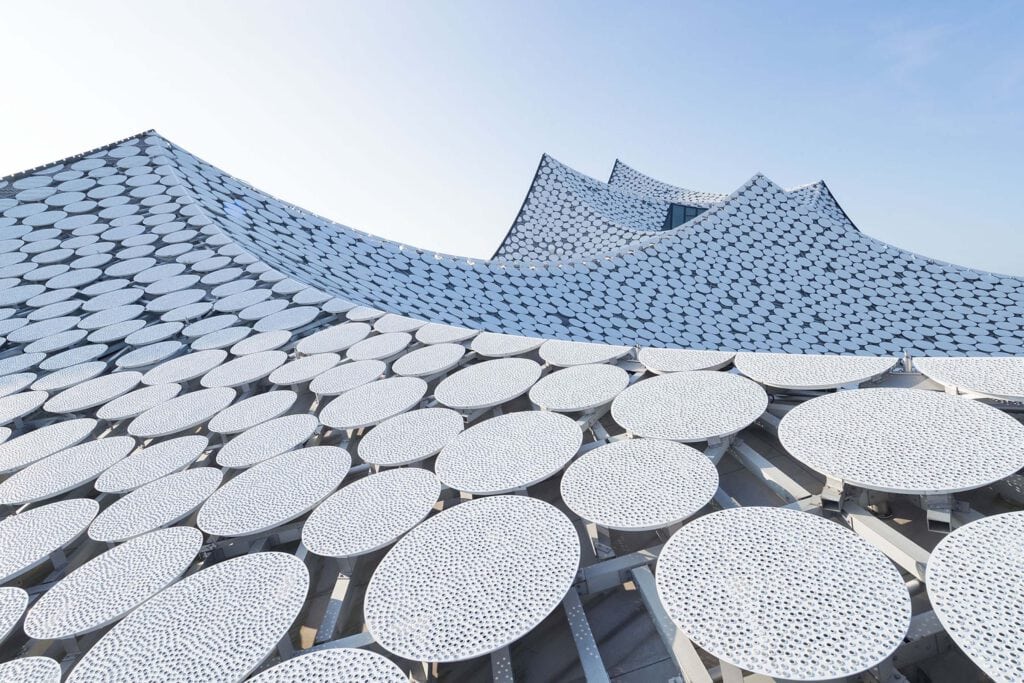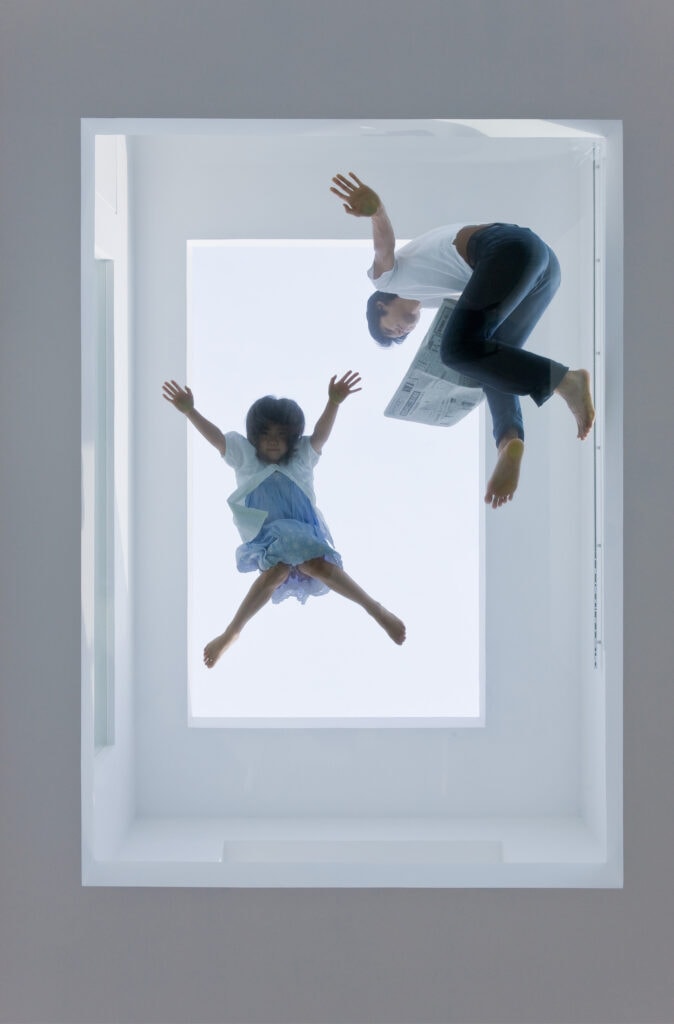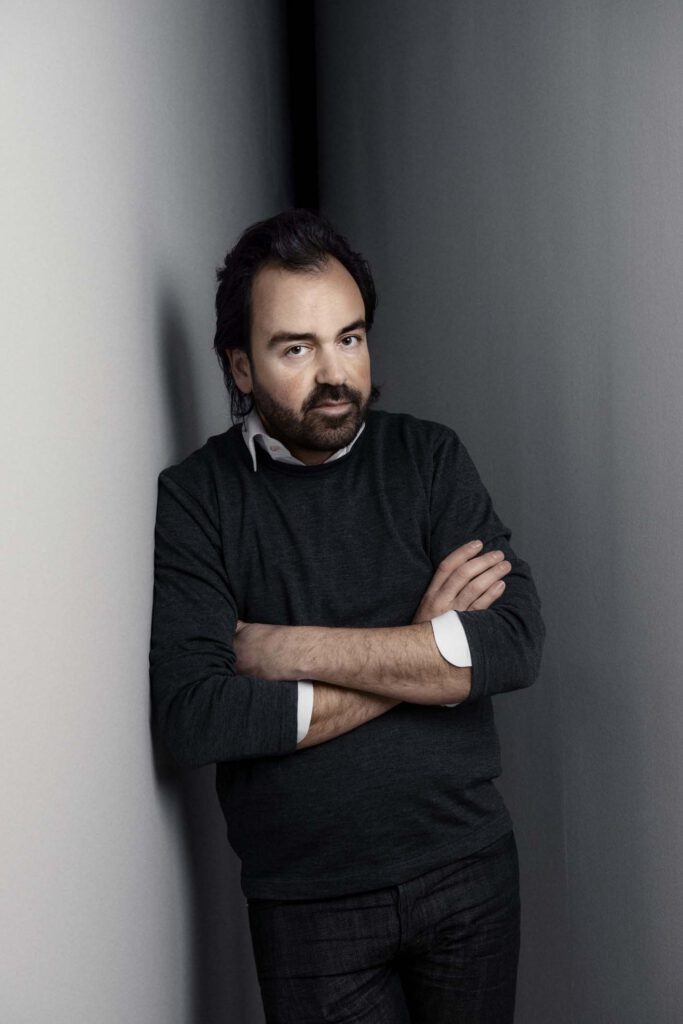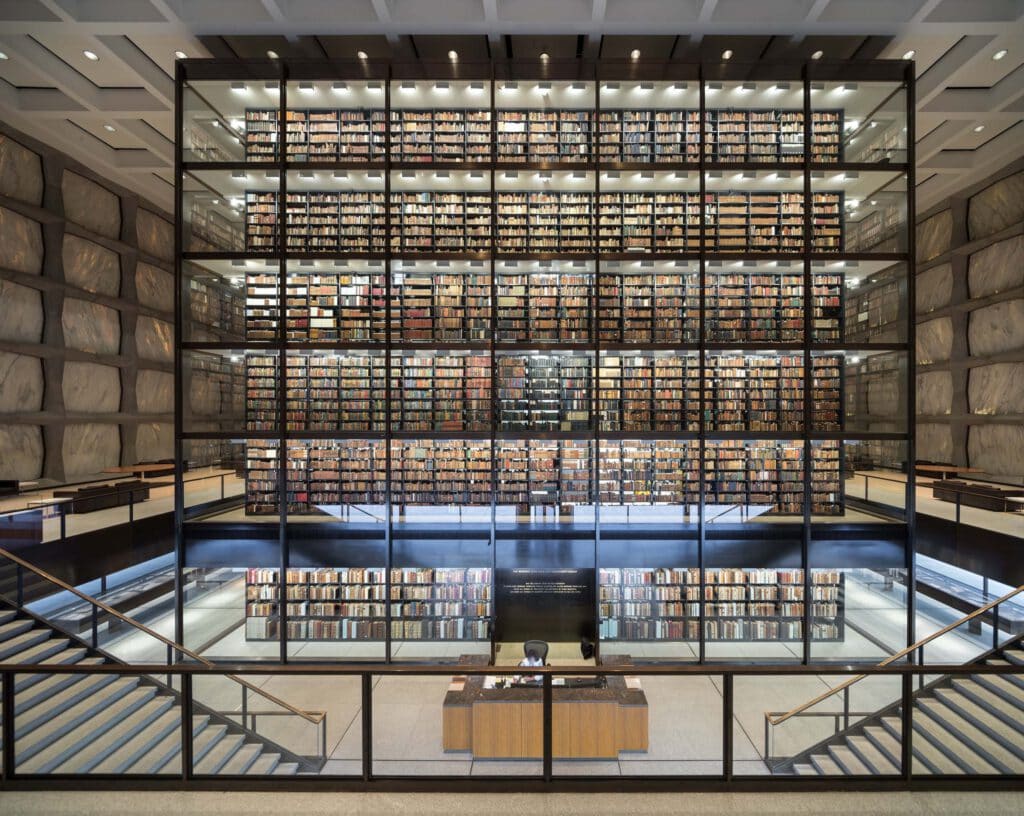Iwan Baan is considered one of the most important photographers of architecture and the built environment. In impressive images, he documents the growth of global megacities as well as traditional or informal buildings and the works of well-known contemporary architects, including Rem Koolhaas, Herzog & de Meuron, Kazuyo Sejima and Tatiana Bilbao. From October 2023 to March 2024, the Vitra Design Museum will dedicate the first comprehensive retrospective to the Dutch photographer. The exhibition “Iwan Baan. Moments of Architecture” presents a panorama of early 21st-century architecture in its urban and social contexts, and the people who live in it, with the photographer’s wide-ranging oeuvre.
Over the last 30 years, the rapid spread of digital media has fundamentally changed the world of photography and architecture. Today, images of new buildings are transmitted in real time, accompany the rise of architects, influence the design process and make architecture – at least visually – available anytime and anywhere. Hardly any other photographer has influenced this development as much as Iwan Baan. His working method is fast and precise and he creates images that are concise, poetic and human at the same time. Baan knows how to capture buildings perfectly, but also captures the moments when architecture comes alive, when construction workers take a break, when people move in or out. Many iconic images of the last 20 years – from the “official” portraits of architectural landmarks to photos of a Manhattan plunged into darkness by Hurricane Sandy – were created through Baan’s documentary eye.
The exhibition shows examples from all areas of Baan’s work since the early 2000s, including film footage and little-known images of informal buildings, from the Chinese round village to the Ethiopian rock church, from self-built multi-storey houses in Cairo to the Torre David in Caracas. “The important thing is the narrative,” says Iwan Baan. “And that is very intuitive and fluid. I’m less concerned with timeless images of great architecture than with the specific moment, the place and the people there – all the unforeseen, unplannable moments in and around a place, how people live there and what stories are told through it.”

China
Baan’s focus on architecture dates back to an encounter with Dutch architect Rem Koolhaas in 2004. The first part of the exhibition shows a series of images documenting two monumental projects in Beijing: the CCTV headquarters by Koolhaas’ architectural firm OMA (2002-2012) and the Olympic Stadium by Herzog & de Meuron (2003-2008). In the process, Baan’s photos also look behind the beautiful facades and show the work and everyday life of the construction workers who built them, often under difficult conditions. Numerous previously unpublished photographs also illustrate how Baan learned to understand architecture as a process and social force – and as a symbol of China’s rise to global superpower status. Further photo series in this part of the exhibition therefore document the Chinese building boom of the early 2000s, as well as contrasting traditional building forms.
Perspectives Since the first joint project with Rem Koolhaas, Baan has established lasting contacts with numerous renowned architects over the years. Herzog & de Meuron, Francis Kéré, Sou Fujimoto, Tatiana Bilbao, Diller Scofidio + Renfro, SANAA, Toyo Ito and many others prefer to have their projects documented by Iwan Baan. Baan captures the character and context of a building by combining aerial shots taken from a helicopter with a range of different perspectives from panoramic to close-up. Most architects trust his photographic intuition and leave the choice of subjects and angles to him. The moment is decisive: instead of waiting for “ideal” conditions, Baan works with the moment – and almost incidentally creates the defining shots that determine the public image of the buildings he photographs. The second part of the exhibition offers an overview of this area of his work, ranging from Zaha Hadid’s MAXXI Museum in Rome to SANAA’s Rolex Learning Center in Lausanne, Toyo Ito’s National Taichung Theatre in Taiwan and Balkrishna Doshi’s projects in Ahmedabad.

Cities
Iwan Baan’s work takes him around the world, exploring booming megacities on every continent. He documents the ups and downs of the construction industry, increasing population density, urban developments and personal stories. Whether in Tokyo, Lagos, São Paulo or Hong Kong, Baan proves to be a chronicler of urban spaces. He repeatedly addresses topics such as urban growth, the legacy of modernity, globalisation and local communities.
He devotes himself to urban icons of modernity such as Brasília or Chandigarh with the same interest as to the fairgrounds in Dakar, designed by Jean-François Lamoureux and Jean-Louis Marin in 1975, or the sprawling suburbs of Los Angeles. Here, Baan uses the ease of digital photography to capture the moment, but is well aware of the pictorial power of a carefully crafted composition. Lines of continuity During his commissioned trips, Baan often also photographs informal or traditional buildings. Whether in Japan, Burkina Faso, Haiti or India, he is always interested in the ways of life and living cultures that have often evolved over centuries, which are perfectly adapted to local conditions and yet show astonishing similarities across continents.
One of these projects documents what is probably the world’s largest tent city, which is created every twelve years on the occasion of the Hindu festival Kumbh Mela, when some 50 to 80 million pilgrims flock to India’s Prayagraj. Another project is dedicated to the Torre David in Caracas, Venezuela: residents of the city occupied the unfinished, vacant building and set up flats and shops in the raw concrete structure. With his photo series, which was honoured with the Golden Lion at the Venice Architecture Biennale in 2012 as part of the contribution by Urban Think Tank (Alfredo Brillembourg and Hubert Klumpner) and Justin McGuirk, Baan created a touching study.
After the presentation at the Vitra Design Museum, the exhibition will be shown in other international museums. The exhibition is accompanied by a comprehensive publication with over 600 photographs from Iwan Baan’s work of the last 20 years. With text and image contributions by Beatrice Galilee, Marvin Heiferman, Hans Ibelings, Mea Hoffmann and Iwan Baan; designed by Haller Brun. Softcover with thread binding and open spine, 23.7 x 17 cm, ISBN 978-3-945852-57-6 (DE), 59,00 €, also available online at: www.design-museum.de/shop

Rolex’s commitment to architecture
Rolex supports architecture as part of its Perpetual Arts initiative. In addition to building relationships with famous architects, the brand has been the exclusive partner and official timekeeper of the International Architecture Exhibition – La Biennale di Venezia since 2014. The initiative promotes artistic excellence and the transmission of knowledge to future generations, making a lasting contribution to global culture. Within this framework, Rolex is proud to support the first major retrospective of the renowned Dutch photographer Iwan Baan at the Vitra Design Museum. In impressive images, he documents the buildings of international architectural stars. Three of these architects – Sir David Chipperfield, Kazuyo Sejima and Álvaro Siza – were mentors in the Rolex mentoring programme. Since 2002, this programme has brought together emerging talent from around the world for a creative exchange with prominent artists who act as their personal mentors for the period. To date, 63 mentors have worked with master students in the fields of architecture, visual arts, film, literature, music, dance and theatre. The exhibition shows, among other things, photographs of Sejima Inujima’s Art House Project, SANAA’s Rolex Learning Center, Chipperfield’s Museo Jumex and The Hepworth Wakefield, and Siza’s production hall on the Vitra Campus.
About the Consulate General of the Netherlands
Germany is one of the Netherlands‘ priority countries in the field of culture. The Consulate General acts as an organisation for cultural relations. Its activities are closely coordinated with the head office in Berlin or a corresponding cultural (umbrella) institution. Basically, the task of the Department for Culture and Communication in Munich is to promote and stimulate Dutch cultural expressions in the federal states of Bavaria and Baden-Württemberg and to strengthen long-term cooperation. This is done, for example, by initiating, promoting and supervising events with a focus on the visual arts, literature and creative industries, advising Dutch funds and cultural institutions, and providing information about cultural institutions and funds in the Netherlands and funding opportunities.
Photocredits: Iwan Baan


iThere are no comments
Add yours